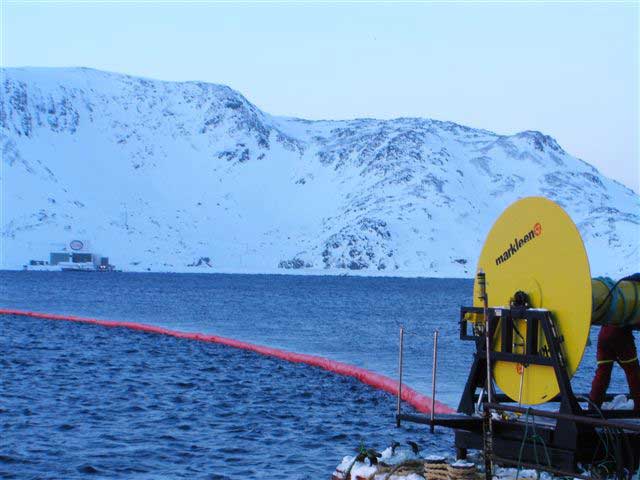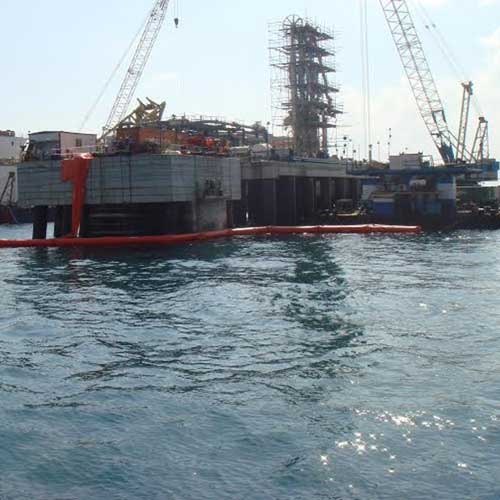How Was The Oil Spill Cleaned Up
At that place are many questions arising from oil spills at bounding main. How practise you make clean upwards an oil spill? How long will an ecosystem affected past an oil spill accept to recover? Why are oil spills so hazardous? How much oil is spilled at body of water?
The fact is, oil spilled in the ocean, creating what is known as oil slicks, is highly hazardous because the emulsion acquired by wave action is very resistant. If non dealt with swiftly, it tin soon reach coastlines and beaches, thereby multiplying the effects of the ending.
The time an ecosystem takes to recover from an oil spill depends on its size. The effects of a small spill can take xv years to completely disappear, while for a larger spill this may take a lot longer. The impairment an oil spill tin can cause is often the collapse and firsthand expiry of a wide range of marine species, besides as water pollution which tin last for years on end, preventing reproduction and the recovery of the ecosystem.
How do you clean upward an oil spill in the ocean?
Faced with such a catastrophe, swift action is required. For this reason, most oil companies, port government, marinas, industries and other companies operating in ports and along the coast prefer to take preventive action, rather than wait for the blow to happen.
Faced with such a catastrophe, swift action is required. For this reason, most oil companies, port authorities, marinas, industries and other companies operating in ports and along the coast prefer to have preventive activeness, rather than wait for the accident to happen. There are a myriad of solutions depending on the location, the type and the size of the spill.
Any response to a spill will always include some, if not all, of the post-obit phases:
- Spill containment, how to choose an oil containment booms
- Mechanical recovery of the spill, using skimmers
- Temporary storage, using both towable bladders or port-based storage tanks
- Final storage or elimination of the recovered oil
- Complete clean-up of the afflicted area, using a multifariousness of manual and/or chemical means, some of which may or may not be permitted past local legislation

What techniques are used to clean upward an oil spill at ocean, in industry or in other areas?
While the largest, headline making oil spills tend to happen at ocean, industry and other sectors also experience spills, either accidentally or continuously.
Offshore oil recovery techniques
The process for recovering oil spills offshore is ordinarily via the containment, mechanical recovery and send to port of the oil.
The equipment used can exist summarised equally follows:
- Large seilf-inflatable booms and inflatable containment booms. Both are deployed and recovered using hydraulic reels.
- Skimmers for recovering oil on water. The recovered oil is pumped to floating tanks which are then towed to port where the oil tin can be stored awaiting its final treatment.
- The MOS Sweeper dynamic recovery arrangement is Markleen'south latest technological development. The organisation consists of a multiple boom herringbone design, deployed from a single vessel. 1 of the many advantages of the MOS Sweeper is that it simultaneously contains and recovers the oil.
- Modest scale oil spills at sea tin be recovered using marine oil sorbents.

Coastal and beach oil spill recovery techniques
Littoral oil spill clean-up involves a number of dissimilar operations as 2 dissimilar natural environments are affected by the oil slick: the sea itself and the coastline, frequently including beaches.
Oil spill recovery and clean-upwards techniques tin include some or all of the post-obit professional equipment:
- Containment of the oil using medium-sized inflatable booms or self-inflatable booms such as the Markleen Seamaster. Depending on the size and location of the spill, cylindrical solid floatation booms and apartment solid floatation booms can also exist used. The MOS Sweeper is of form also suitable for this type of spill, which as mentioned before, oil spill is recovered using hydrodynamics. If the spill affects a beach, the Markleen S Series embankment sealing blast should be used to contain the oil in the intertidal area. As tin can be seen, the nature of the spill is of less importance than the location where it occurs. So depending on the conditions at the location of the spill, we can advise you as to the nigh suitable type of containment boom to use.
- Oil recovery is best performed using MS xx skimmers or MS 30 skimmers, depending on the amount of oil to be recovered.
- The next step after oil spill recovery is to transfer the oil to country based tanks such every bit the Markleen EasyTank – Flexible bladders for transporting oil recovered following a spill at ocean – or Markleen AutoTank – a fast and economical solution for the temporary storage of oil. If the spill is located several miles away from the coast, floating bladders may be necessary to send the oil to state.
- To complement the use of mechanical containment and recovery equipment, we can also use sorbent booms to contain and blot the oil spill, which are then sent off for waste material processing.

Port and harbour oil spill recovery techniques
Oil spill preparedness is vital both in pocket-size marinas and in large ports with a loftier traffic density of large vessels.
Faced with the inevitable spills occurring in ports and harbours, whether it be crude oil or lite fuel, the equipment used volition depend on volume and tin exist summarised equally follows:

- In rough weather, the same equipment used for a littoral spill may be required, just otherwise, in the relatively calm atmospheric condition of a port, medium-sized solid floatation containment booms may be used. In many ports, including private ports, permanent booms such equally the Markleen P Serial, are used in preparedness for an blow.
- To recover oil from the h2o in ports and harbours, smaller skimmers may be used, such as the Markleen MS 10 and MS 20 MultiSkimmers.
- As regards temporary storage, land based tanks such every bit the Markleen EasyTank and AutoTank are used to agree the recovered oil earlier it is sent away for waste handling.
- And for oil and fuel spilled in harbours we can also utilize a wide range of oil sorbents, including skirted sorbent booms, which are widely used in marinas, as well other types of containment nail.
Oil spill recovery techniques in rivers and lakes
Oil spills of course do not occur but at sea, and rivers and lakes can also be affected by this type of catastrophe, albeit usually to a lesser extent.
Oil spill recovery and clean-upward equipment used in fresh water can exist summarised equally follows:
- Small containment booms such as the Markleen A Series, specially the A 500 containment boom.
- Small oil skimmers such as the Markleen MS x skimmer.
- Land-based temporary oil storage tanks
- In full general, the use of oleophilic and hydrophobic oil sorbents is highly recommended
Oil spill recovery techniques in industry
In industry many small scale oil spills happen daily both within a visitor's bounds and sometimes too contaminating the surrounding area. Oil recovery and make clean-up equipment used in industry can include the following:
- In factories with water tanks where a layer of oil forms over time, minor skimmers such every bit the pneumatically driven Markleen MS 10 are ideal to go on the tank clean.
- For spills on floors and on water in industrial environments, a broad range of industrial sorbents are used.
- In hydro-electric ability generation plants in mountainous environments, spills are ordinarily contained with pocket-size or medium-sized containment booms and skimmers, as well every bit industrial sorbents.
Clean-upwardly techniques for port construction and dredging work
While these techniques are not related to oil spill recovery at ocean, we feel it is relevant to mention them in this article by manner of introduction. The disturbing of sea water and the generation of a large amount of sediments during port construction and dredging work calls for measures to be taken to contain material in suspension and prevent it from spreading to sensitive areas nearby.
- For these operations, the product used is silt curtains or turbidity barriers, which contain the sediments using a made to measure solution consisting of two parts: the buoyancy element and the brim, the depth of which will depend on the depth of the water at the location where it is used.

Technical team Markleen
Although it seems easy from an informative point of view, Markleen technically aid you with supplies of all-inclusive packages for the fight against marine pollution and protected waters peculiarly designed for the type of spill and needs of each client. Practise non hesitate to contact our technical team to embrace any need.
Source: https://markleen.com/oil-spill-response/oil-spill-clean-up-techniques/
Posted by: wallswhiden.blogspot.com


0 Response to "How Was The Oil Spill Cleaned Up"
Post a Comment